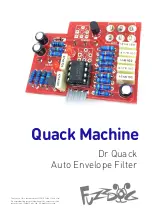
3-1
Brooks
®
Model 5851E
Section 3 Operation
Installation and Operation Manual
X-TMF-5851E-MFC-eng
Part Number: 541B104AAG
November, 2008
3-1 Theory of Operation
The thermal mass flow sensing technique used in the Model 5851E works
as follows:A precision power supply provides a constant power heat input
(P) to the heater, which is located at the midpoint of the sensor tube. Refer
to Figure 3-1. At zero, or no flow conditions the heat reaching each
temperature sensor is equal. When gas flows through the tube the
upstream sensor is cooled and the downstream sensor is heated,
producing a temperature difference. The temperature difference T2 - T1, is
directly proportional to the gas mass flow.
The equation is:
Δ
T = A * P * Cp * m
Where,
Δ
T = Temperature difference T2 - T1 (°K)
Cp = Specific heat of the gas at constant
pressure (kJ/kg-°K)
P = Heater power (kJ/s)
m = Mass flow (kg/s)
A = Constant of proportionality
(S
2
-°K
2
/kJ
2
)
A bridge circuit interprets the temperature difference and a differential
amplifier generates a linear 0-5 Vdc signal directly proportional to the gas
mass flow rate.
The flow restrictor shown in Figure 3-1 performs a ranging function similar
to a shunt resistor in an electrical ammeter. The restrictor provides a
pressure drop that is linear with flow rate. The sensor tube has the same
linear pressure drop/flow relationship. The ratio of the restrictor flow to the
sensor tube flow remains constant over the range of the meter.
Different restrictors have different pressure drops and produce meters with
different full scale flow rates. The span adjustment in the electronics
affects the fine adjustment of the meters full scale flow.
In addition to the mass flow sensor the Model 5851E Mass Flow Controller
has an integral control valve and control circuit, as shown in Figure 3-2.
The control circuit senses any difference between the flow sensor signal
and adjusts the current in the modulating solenoid valve to increase or
decrease the flow.
The Model 5851E has the following features incorporated in the integral
control circuit:
•Fast Response
Adjusted by the anticipate potentiometer, this circuit, when properly
adjusted, allows the high frequency information contained in the sensor
signal to be amplified to provide a faster responding flow signal for remote
indication and use by the control valve.
















































